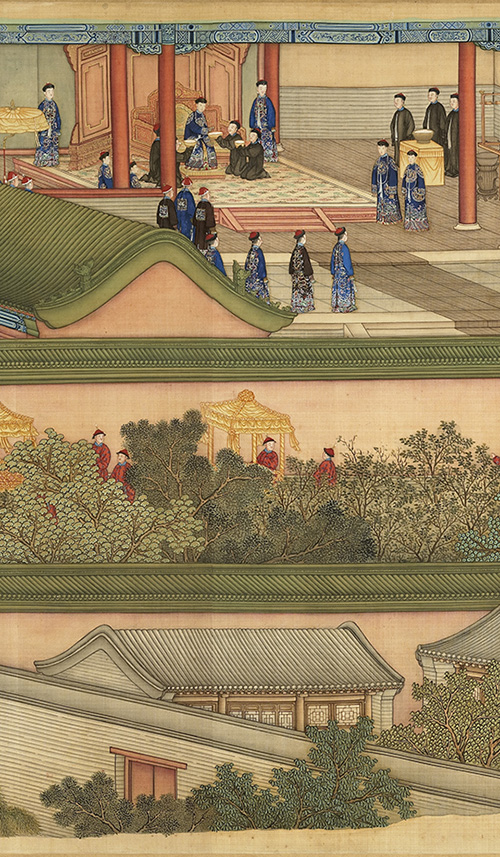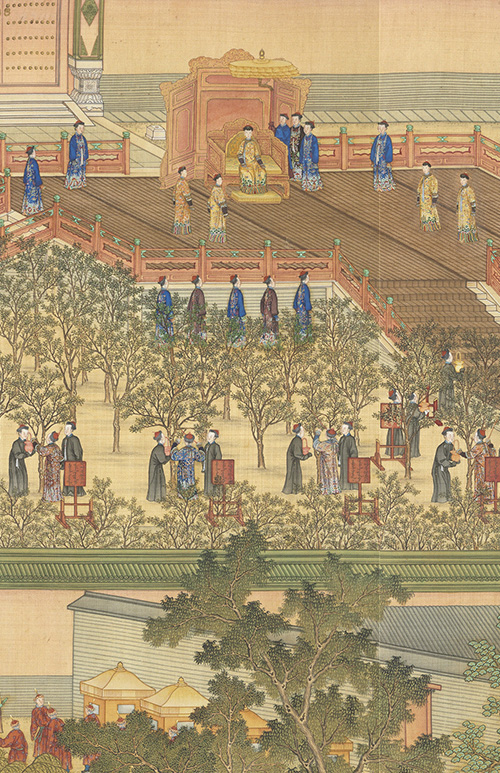Giuseppe Castiglione's portraits for the Qing court serve as authentic records of the ruling family, nobility, and meritorious officials. Under the aesthetic guidance of the Qianlong emperor, Castiglione's accuracy for their facial features and proportional relationships are combined with a consistent source of light to create shading and delicate descriptions that yield exceptional images of volume and presence. Although the portraits of Qianlong's empress Xiaoxian and his consort Huixian here are unsigned, stylistically speaking, they are most likely from the hand of Castiglione. The paintings of Qianlong on a hunting party and with bow and arrow depict the emperor at the Mulan grounds, emphasizing the Manchu attention on martial pursuits. Castiglione also worked with other court painters to produce a set of four handscrolls on the rites of silk farming that records the Xiaoxian empress overseeing the ceremonial picking of mulberry leaves and presentation of silkworm cocoons at the Western Gardens, manifesting importance attached by the court to not only agriculture, but also sericulture. In addition, Castiglione's paintings of the warriors Ayusi and Macang commemorate actual military conquests. Besides being masterpieces of art, they also testify to people and events of importance to the Qing court.
:::
Menu
- Introduction
- The Years Before and After Coming to China
- A New Model of Academic Painting
- Conceiving and Completing "One Hundred Horses"
- Commemoration and Ceremony in Qing Court Painting
- Tributes to Realism for Imperial Review
- Documenting Military Achievements in Copperplate Prints
- Exhibit List
- Sitemap
- 中文版
- English
- 日本語



